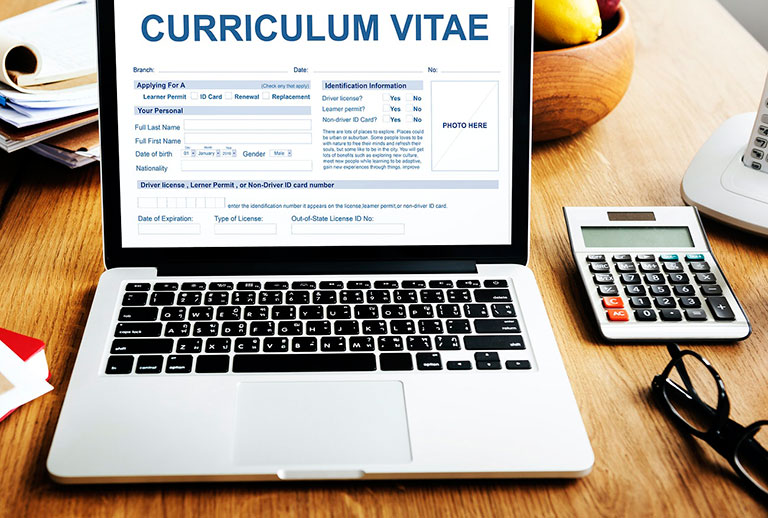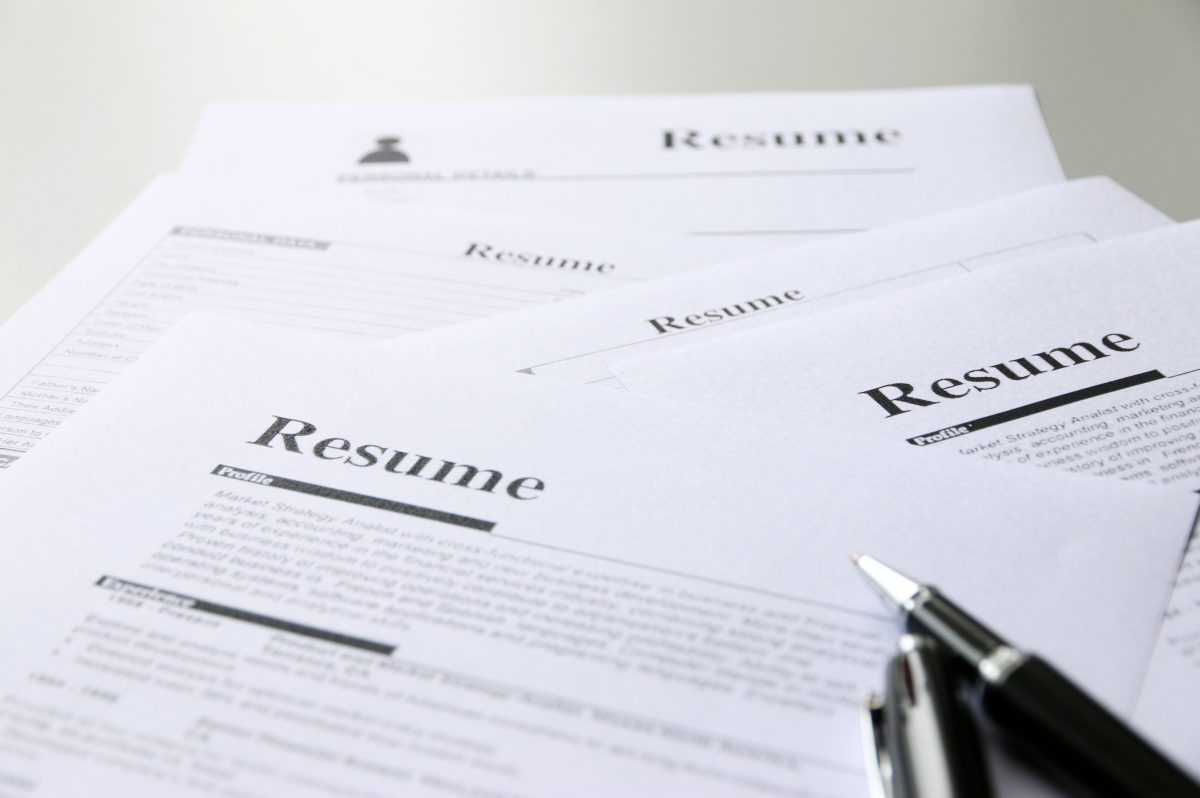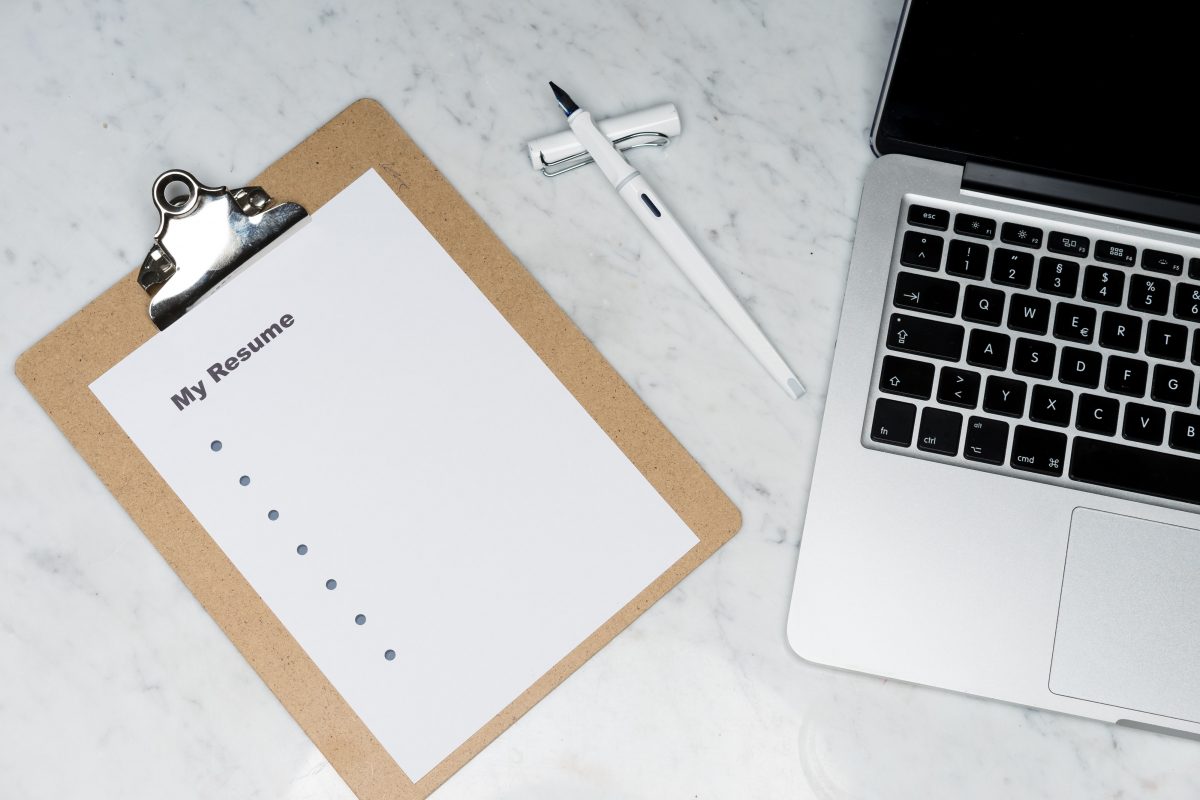Knowing how to write a resume is essential if you want to land your dream high-paying jobs at your dream companies. But you can’t write up just any resume. As a job seeker, whether you are an entry-level or have been working for years now, you need to craft a good resume that not only gets you an interview but also a job offer. And professional resume writing services can help you do just that. These companies have certified professional writers who specialize in creating attention-grabbing resumes and cover letters customized to fit your career field.
Think of your resume as a salesperson selling your qualification, skills, and experience to a buyer, which in this case, is the company’s hiring manager. You need to set your resume up in such a way that it truly sells you as an employee and person. In this article, we’ll enlighten you on what a resume is, the different types, and the important steps you need to take to create the perfect one. If you have been asking, “how to write a resume for a job?” and looking for resume templates, read on.
What Is a Resume? Why Is It So Important?


A resume is a document used for job applications. It contains a professional summary of your job qualifications and other vital information about you. As a job seeker, your resume should serve as your mouthpiece. In many cases, there is a slim chance that you and an employer might see eye to eye (at least at first contact). Your resume, therefore, gives the employer a preconceived notion about you. Knowing this, it is critical to pay attention to how you present yourself on paper. This implies that you have to give due diligence to drafting an excellent resume before tendering it to a potential employer.
Remember, you are not the only one applying for a particular job. Chances are, there are tens to thousands of other people applying for the job titles you’re eyeing. Submitting a poorly drafted resume will immediately take an employer’s eye off you. Since there are a lot of applicants, they will focus on the best resumes. A hiring manager will not waste time trying to understand the point you intend to communicate.
CV vs Resume: What’s the Difference?
Before we discuss how to create a resume and the things to put on it, let’s talk about a CV. When on a job search, you’ve probably come across a posting asking for a CV, instead of a resume.
What is a Curriculum Vitae?


Curriculum Vitae or CV is another formal document used when applying for jobs. It is a more comprehensive document that lists all your academic credentials and career achievements. Essentially, it acts as a career biography, with the details listed in chronological order. With that said, CVs can range between two to three pages long. A resume, on the other hand, contains a brief description of your skill and work experience. Usually tailored towards a particular job, it’s a snapshot of the reasons you are qualified for a certain position. You cannot use the same resume to apply for different jobs in different fields.
Tip: When you write a resume, you have a target audience in mind. That said, especially when applying for jobs in different fields, you shouldn’t be sending out the same CV to different companies.
Your resume must have two important characteristics:
- It must be a simple resume. A simple resume format needs to be as concise as possible. No fluff or unnecessary details included.
- It must be a professional resume. Your use of language and your formality must be properly scrutinized before submission. You are writing to a potential employer. Avoid the use of slang and other informal language forms.
A resume is usually requested by employers in the United States and Canada. Curriculum vitae is used vastly in European countries.
Things To Put On a Resume
Although expected to contain brief information, there are some essential things to put on a resume:
- Personal details — This includes your name and contact information, such as phone number and email address.
- Objective — Also known as a resume summary, this is a statement that describes you briefly and the values you want to offer. You must ensure you write a strong resume objective.
- Work History (Job Experience) — Have you worked for a firm or an institution? Have you even embarked on volunteer work or individual projects that are related to the job description? You should input all these on your resume.
- Educational Background — What school did you attend? What year did you graduate? What degree did you bag? These are questions that you should answer in this section.
If you are entry-level, in other words, someone who is just starting in their career, you may want to include one or two achievements, such as your CGPA, extra-curricular activities, awards, and honors. This is to show that, although you lack the formal background in a particular job, you have the capability to perform the needed role. Things like being a fast learner, willing to learn, and willing to be trained are some of the keywords you can use to express your intention to learn the role.
Types of Resume


Before answering the question of “how to write a resume,” it is essential to know the different types of resumes.
There are three types of resumes that are the most commonly used.
- Functional Resume
- Chronological Resume
- Combination Resume.
The type of resume to construct may depend on the nature of the job you are seeking. It may also depend on your work experience and your level of skill.
A Functional Resume
The functional resume is meant to highlight your skills. For example, you may be applying for a job as a freelance writer. A functional resume gives details about your skill as a writer. Some of these skills may include your ability to construct sentences, your communication skills, etc.
Functional resumes are written by people with little to no work experience. So if you’re applying for an entry-level position as a first job and you want to learn how to write a resume with no experience, you might want to consider tendering a functional resume.
Note: You are not expected to focus so much on your professional history. This would be out of place when writing a functional resume. You can include professional experiences, but your focus is to draw the attention of the employer to your skills.
For a functional resume, you can begin with an objective or summary. Make sure you detail your contact information (as much as is relevant).
Your professional experiences (if you have) can also be helpful in convincing potential employers. Make sure to include as many relevant professional experiences for the job you are applying for.
Enlist your skill in order of dexterity. Enlist your major skills first, then your minor or soft skills last. You may also want to review the job description and make sure that you tick off as many skills as possible. That said, never lie in your resume. It’s better to let your hiring manager know that you lack a particular skill but are willing to learn than lie about it.
Lastly, give accurate and precise details about your education.
Here is an example resume that fully describes a functional resume:
John Doe
Seattle, WA 01234-567
*******@email.com
Objective
A witty and skillful writer with a desire to convince customers to buy Aurator products.
Professional Experience (if any)
Content Creator for Akinstable Enterprises
Microsoft Office Educator at Somyll institute.
Skills
Writing (give details)
Verbal communication (give details)
Customer Engagement (give details)
Education
Boston University, Massachusetts (2012-2016)
Bachelor of Arts in Liberal Studies in English and American Literature
Chronological Resume
The chronological resume is written with a major emphasis on work experiences. Vital questions such as “Which firm have you worked with?” ”What position have you held, or are you holding?” and “How many years have you been working?” should be explicitly stated.
When writing a chronological resume, your most recent work experience should be stated first. You are to give details of your working history from the most recent to the least recent. This order is known as reverse-chronological order.
The most important information on chronological resume includes the following:
- Personal details such as name and contact
- Objective
- Work history
- Educational background
- Transferable Skills
When writing a chronological resume, it should follow the above order.
Your work history, education, background, and skills can be summarized as your profile.
An example resume is described below:
John Doe
Seattle, WA 01234-5678
*******@email.com
Objective
A witty and skillful writer with 5 years of working experience.
Work History
Content Creator for Akinstable Enterprise; June 2015 – present
Job Description: Write product review contents for *****.com, give adequate customer feedback.
Educational Background
Boston University, Massachusetts (2012 – 2015)
Bachelor of Arts in Liberal Studies in English and American Literature
Skills
Writing (briefly describe)
Verbal Communication (briefly describe)
Customer Engagement (briefly describe)
Combination Resume
As the name implies, a chronological resume is a merge of both functional and chronological resumes. You are to give detailed information about your skills and your work history. Both must be stated explicitly.
Tips on Writing a Perfect Resume for Your Dream Job


Follow a Simple Resume Format and Design
Truly, simplicity is key. You’ll find some of the best resumes out there are the simplest ones. No obnoxious fonts and overly colorful designs. However, if you are applying for a creative role, for example, such as graphic design artist, you may want to already give your hiring manager a sneak peak of your skills by giving them an impressive resume. Use professional fonts that are very easy to read and avoid stylized fonts.
The most commonly used and accepted fonts are Times New Roman, Calibri, or Arial. Do not use too small or too big font size. Font size between 12 and 16 is usually the safe range. Do well to apply good line spacing. Remember, these aren’t hard and fast rules. You should have good judgment of whether your resume format looks easy on the eyes. One thing to remember is that no matter how you format your resume, it should always be eligible to read. Before sending out your resume online, you can also print it out to what it looks like on a hard copy.
If you are, however, wanting to add some personality to your resume, it should suit the job and company you’re applying to. Take time to go over resume templates and samples before drafting your own to get a sense of what kind of resume you want to present to the employer. Model the best and you’ll definitely be on your way to bagging your dream job.
List Relevant Skills and Keywords
Ensure that you input the right keywords alongside your relevant skills when drafting out a resume. Take a considerable amount of time to read and carefully understand the job description. Take note of what the employer is seeking. Keywords are essential because they draw the attention of the employer. You want to make sure that your potential employer is glued to your resume.
Utilize Action Words
Action verbs or words will not only liven up your resume but also help catch the eye of recruiters and hiring managers. Many job seekers tend to simply list past responsibilities from previous job titles. However, by using action verbs at the beginning of bullet points to emphasize the impact you had on your previous projects and roles. Some examples of action verbs to use in a resume include “achieved,” “spearheaded,” and “facilitated.”
Tailor Your Resume for the Job You’re Applying For
Make sure to highlight all relevant information and skills above the less relevant ones. For example, as a writer, emphasize your writing skills and previous job experience in the same field. The less important information maybe your other qualifications.
Optimize Your Resume for Applicant Tracking System
An applicant tracking system or ATS is a software most companies and recruiters used to filter and sort through resumes. When applying online for onsite or work-from-home jobs, your resume first goes through an ATS before it lands on the table of a recruiter. Companies can program the software to pick out resumes with certain key skills and titles. This helps them select the best candidate for a job position. While there is no universal way to get past applicant tracking systems, there are certain ways to optimize your resume.
This includes the tips mentioned above. Tailor the information on your resume for the position you’re applying for. Include keywords mentioned in the job description and use action verbs to highlight your accomplishments.
Proofread Your Resume
Proofreading helps detect errors. You do not want to give your potential employer a wrong impression, right? Ensure that all your words are properly spelled. Ensure that your contact address is also accurate. There are cases of people getting singled out for a job due to misspellings; thus, the employer could not contact them. You definitely do not want to be that person. When you detect errors, do not hesitate to make adequate corrections.
Tips on How to Write a Resume Objective


Wondering how to write a resume summary or objective? Ensure that this section of your resume is catch and unidirectional. Your target is to get the job. Your objective must, therefore, be tailored in the direction of getting the job. Here are some tips to keep in mind:
- Make sure that your skill tallies with the job description. Describe what you can offer to the employer in explicit and clear times.
- Do not make your objective all about you. Your resume objective should emphasize the values you can offer to a company.
- Do not write irrelevant statements. This cannot be overemphasized. State what you intend to offer and keep it brief.
Cover Letters


Now you know how to write a resume, the next step is learning how to draft a cover letter. While not all recruiters require them, cover letters are a great way to introduce yourself to a potential employer.
Knowing how to write a cover letter can be as important as drafting out a perfect resume itself. Usually, a cover letter is what differentiates a job applicant from his competitors. Having a good resume cover letter will make you stand out.
Your cover letter could just be what will convince an employer that you are the right candidate for the job. A resume gives a succinct description of your qualifications. A cover letter gives an indication of how you intend to apply your skill to the job.
Do’s and Don’ts of Resume Writing


We’ve already mentioned a few things to avoid when it comes to writing a resume. But it never hurts to know a few more. Here are some do’s and don’ts that every jobseeker should know.
Don’ts
- Add every single job title you’ve ever held. This cannot be stressed enough, don’t list experience that is irrelevant to the position you’re applying for. You will just come off as someone jumping from one career to another. For some hiring managers, this looks bad as it tells them that you will not be likely to stay with the company long term.
- Just list your past responsibilities from previous job titles.
- Include unnecessary personal details such as age, religion, marital status, zodiac sign, and hobbies. These details do nothing to get you the role. It is more likely just a space-filler on your resume. Your resume should be simple and easy to read but has all the necessary details that tell them you are fit for the role.
- Put your photo on your resume. This is, of course, unless the company and position you’re applying for require one.
- List your high school diploma or achievements, unless that is the highest education level that you’ve attained.
- Go over two pages. If you’ve truly only listed relevant and curated skills, your resume shouldn’t be longer than two pages.
Dos:
- Curate the best and list the more relevant job positions you’ve held that relate the most to the one you’re applying for.
- Highlight positive results and specific achievements you’ve done while serving in that position. Focus on how well you performed said responsibilities by including quantifiable accomplishments. This can look something like, “Increased company revenue by 54% in less than six months.” Or “Cut down production costs and overhead by 37% and saved the company $20,000–$24,000 in a year.”
- Include your LinkedIn profile to provide extra details of your professional career. You can even add your social media handles, especially if you’re applying for a position in the creative field. Sites like Facebook and Instagram can serve as a digital portfolio for graphic designers or photographers.
- Add industry-specific courses you’ve taken during college. For fresh graduates with little to no experience, list down the related courses, workshops, seminars that you took up.
- Try to stick to a one-page format with compelling details about you while also including essential information. While a two-page resume is common and acceptable, it’s still best to curate a resume that highlights your key experience in just one page.
Resume Makers/Builders


Technology has really made things easier and faster. It is definitely no surprise that there are some free tools and software that could be helpful in constructing a resume. The old-aged question of “how to write a good resume” has therefore been dealt with. Any website or application that enhances the construction of a resume is called a resume builder. And there are a lot of resume builders online with hundreds of templates to choose from. You can simply enter your personal information, educational and work history and you’re good to go. Having a good-looking resume already puts you ahead of the competition.
Here are some of the best-paid resume makers today:
- Zety Resume builder
- ResumeHelp
- ResumeLab
- Visual CV
- ResumeNerd
- ResumeNow
Some resume template makers are also free. Here’s a list of free resume makers on the internet:
- Canva
- Easy Resume Builder app
- Resume Maker Free
- Resume Builder Free
How to Make a Resume for Your Dream Job
There is no singular method of writing a resume. The type of resume you write should always be determined by your target audience. However, following this basic guide will ensure that you know how to make a resume that will land your dream job!





![How To Write An Impressive Cover Letter In 2020 [Samples Included]](https://citizenside.com/wp-content/uploads/2020/05/How-to-write-a-cover-letter-300x194.jpg)